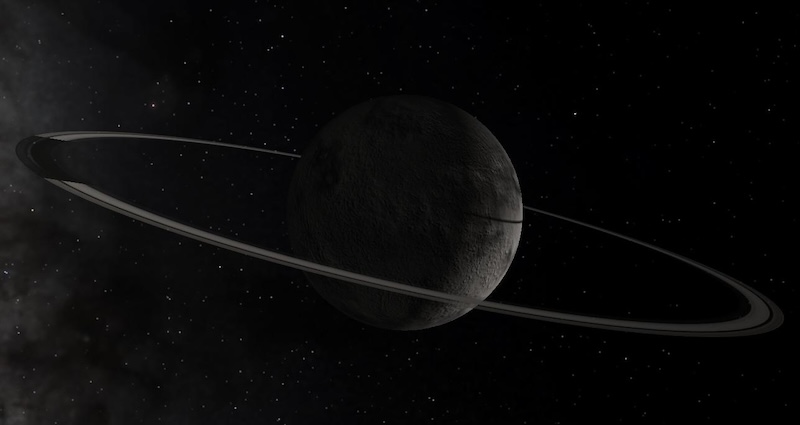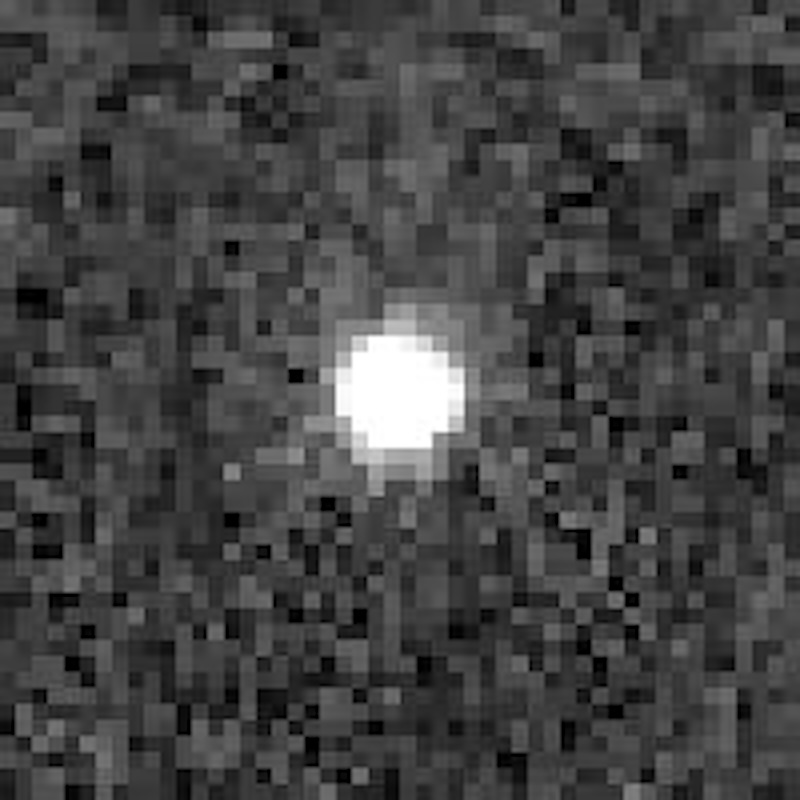
Chiron is a centaur: a small, rocky body that orbits between the gas giant planets Saturn and Uranus. In 2015, astronomers said that Chiron might have rings. Previously, in 2014, astronomers discovered rings around a similar body, the centaur Chariklo. But scientists have been unsure whether Chiron’s rings are true rings. Some studies suggested a 2-ring system. On November 29, 2023, the Planetary Science Institute in Tucson, Arizona, said that a new study indicates that Chiron doesn’t have true rings. Instead, the study says “evolving material” is orbiting Chiron.
The researchers published their peer-reviewed results in The Planetary Science Journal on November 28, 2023.
The 2024 lunar calendars are here! Best Christmas gifts in the universe! Check ’em out here.
‘Evolving material’ instead of rings?
According to the new study, instead of stable rings, the researchers say the material is likely “evolving” over time. Amanda Sickafoose of the Planetary Science Institute, who led the study, said:
These data were used to rule out any substantial global atmosphere around Chiron. The locations and amounts of material that were detected around Chiron are different enough from previous observations to suggest that there is not a stable ring system but rather surrounding material that is currently evolving.
As Sickafoose explained:
There is material orbiting around Chiron that is evolving on relatively short timescales. Past stellar occultation observations have detected material around Chiron’s nucleus, and it was thought to be due to jets or a shell of surrounding debris. Data from a 2011 occultation were interpreted to be a two-ring system like that discovered at Chariklo. The observation reported here, from 2018, is not consistent with the two-ring interpretation.
The researchers determined the changing nature of the material by comparing observations from 2011, 2018 (the stellar occultation) and 2022. The paper states:
These results suggest that the properties of the surrounding material have evolved between the 2011, 2018 and 2022 observations …

Here’s how they know
The findings are based on a stellar occultation of Chiron in 2018. Astronomers often use stellar occultations to measure the sizes and shapes of small bodies in the outer solar system, like centaurs and other asteroids or comets. They also use them to discover and characterize planetary atmospheres and rings.
The South African Astronomical Observatory (SAAO) observed the stellar occultation on November 28, 2018, using the 74-inch (1.9-meter) telescope in Sutherland, South Africa. Lead author Amanda Sickafoose of the Planetary Science Institute said:
We observed a star passing behind the centaur Chiron from the 1.9-meter [74-inch] telescope in Sutherland, South Africa. We detected dips in the starlight as it was blocked by Chiron’s nucleus as well as by material located between 300 to 400 kilometers [186 to 249 miles] on either side.
Additional observations of Chiron and other bodies
Astronomers will continue to observe Chiron, as well as other centaurs and asteroids that may have rings. So far, Chiron is the only smaller solar system body that has material orbiting it that mimics rings. Some others, like Chariklo, do indeed have actual rings. Most smaller objects like these appear to not have any material surrounding them at all. Therefore, it will be interesting to see if any more of the known small-body ring systems turn out to be false rings as well.
NASA has also previously proposed a Chiron Orbiter Mission, as part of The National Research Council’s Planetary Science Decadal Survey.
Chariklo is the largest known centaur, with a diameter of 188 miles (302 km). Its rings orbit at a distance of about 250 miles (402 km) from the center of the body. Astronomers discovered its rings in 2013. In February 2023, NASA said that the James Webb Space Telescope had observed Chariklo’s rings, also during a stellar occultation.
Centaurs, named after the mythological creatures that were part human and part horse, have characteristics of both asteroids and comets. A NASA study from 2013 suggested that most centaurs have a cometary origin.
Bottom line: A new study suggests that the possible rings around the centaur Chiron in the outer solar system are instead “evolving material” that mimics rings.
Source: Material around the Centaur (2060) Chiron from the 2018 November 28 UT Stellar Occultation
Via Planetary Science Institute
Read more: Possible rings around minor planet Chiron
Read more: Webb observes Chariklo’s rings during occultation











